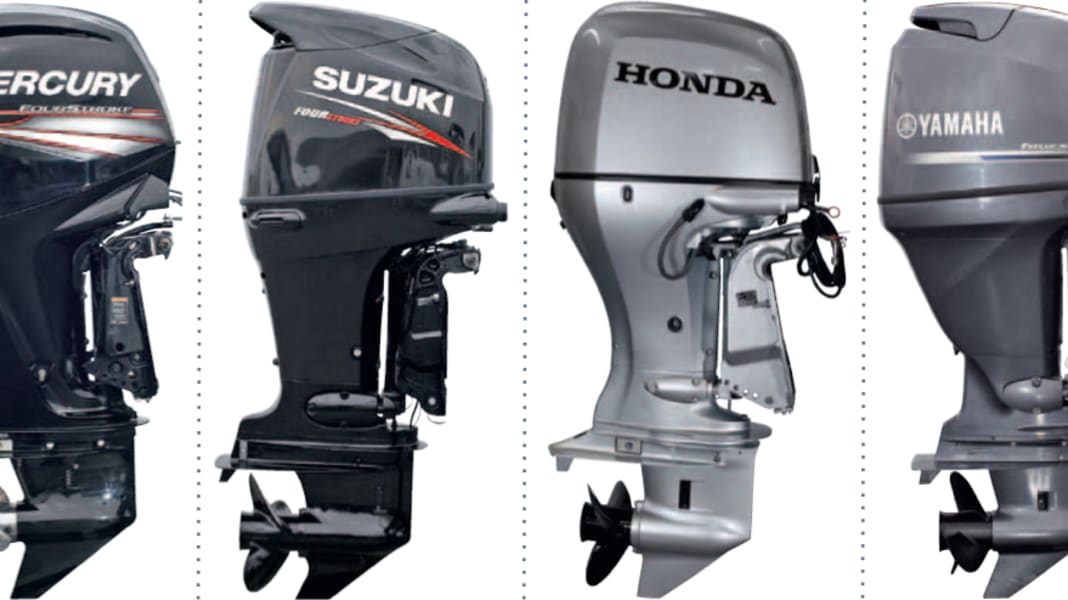

Our four test candidates include two brand new motors. Both were only presented at boot Düsseldorf in 2014. The BF 100 is the first Honda outboard in this performance class. Mercury, on the other hand, has always had 100cc engines in the past, but is launching a completely new development on the market with the F 100 EFI. The Suzuki and Yamaha engines are therefore considered old hands. However, they are happy to accept the comparison and want to show that they are far from being old hat.
The engines with the lowest three-digit power rating are used at the stern of ribs and open sports and cabin cruisers in the 5-6 metre class. Lake Constance is a particularly interesting area of application that should not be underestimated by engine manufacturers. Since the introduction of the Lake Constance Shipping Regulations (BSO 1 and 2) exhaust emission standard in 2006, a maximum of 100 hp has been permitted for new registrations or replacements for old outboards, provided the engine remains below the limit values or complies with the EU Sport Boat Directive. All of our test candidates fulfil these requirements and can therefore be used on Lake Constance.
For our test, Boote Pfister from Schwebheim provided us with the Jeanneau Cap Camarat 5.5 CC, a typical boat for the performance class. The dimensions are 5.48 metres in length and 2.36 metres in width. In terms of weight, the shipyard states 780 kg without engine. The fuel tank holds around 100 litres and long-shaft engines up to 115 hp are permitted. You can read about how the Cap Camarat 5.5 CC fared in the boat test in the 09/14 issue of BOOTE.
Let's move on to our test quartet, the similarities between the engines can be found on the data sheets. All candidates have four cylinders arranged in series, electrically controlled sequential intake manifold fuel injection and, of course, electro-hydraulic trim. Both the Mercury and the Suzuki have a displacement of just over 2 litres. Furthermore, Honda, Suzuki and Yamaha have 16-valve technology. However, only the Suzuki and the Yamaha have two overhead camshafts.
In detail: The F 100 EFI from Mercury is the front runner in terms of cubic capacity with its 2064 cc, closely followed by Suzuki's DF 100 with 2044 cc. In third place is the F 100 from Yamaha with 1596 cc. Bringing up the rear is the Honda BF 100 with 1496 cc.
If you do a little genealogical research, you will find that the Mercury shares the block with its brothers in the 80 and 115 hp performance class. In the case of the Suzuki, it is the 115 and 140 hp models. The Honda and Yamaha only share the block with the 80 hp engines. The advantages and disadvantages of a large displacement and thus more installation space become apparent when it comes to weight and acceleration.
YOU CAN FIND THE COMPLETE ENGINE TEST WITH ALL MEASUREMENT RESULTS IN THECURRENT FEBRUARY ISSUE FROM BOATS THATNOW ON SALE GIVE!
